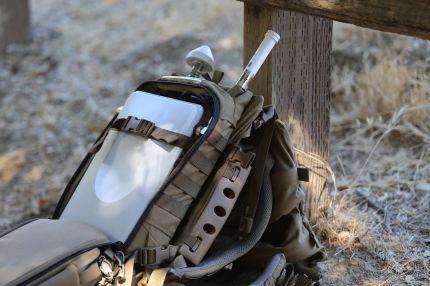Advertisement feature
With the adoption of LTE technology, public safety networks can respond to the pressing need for fast, reliable data communications with guaranteed security.
One example of new capabilities brought by LTE is real-time video streaming. Such capability can have huge impacts on intervention efficiency. In the case of a natural disaster rescue mission, different cameras can be deployed on first responders or on drones. This allows the command center to get a complete view of the situation and push the video to first responders who need it.
First responders need more than traditional LTE network
Public safety agencies have to operate in situations or locations where getting access to these new capabilities can be a challenge:
- In case of flood, earthquake or tsunami, the infrastructures in place can be very seriously damaged.
- Forest fires are occurring primarily in very remote areas where coverage is not a given.
- Big events are requiring extra capacity in a very localized area, during a relatively short period of time.
 Paradoxically, in these very specific cases, first responders have a critical need for broadband communications so they can operate efficiently. Therefore it is essential to take these requirements into consideration when defining the network evolution toward mobile broadband. Such projects must specifically include a section dedicated to deployable LTE.
Paradoxically, in these very specific cases, first responders have a critical need for broadband communications so they can operate efficiently. Therefore it is essential to take these requirements into consideration when defining the network evolution toward mobile broadband. Such projects must specifically include a section dedicated to deployable LTE.
Those deployable systems must be able to provide LTE coverage in a couple of minutes and simply allow first response units to utilize voice and video as well as other data-based services in emergency situations when mobile networks have been compromised. Depending on the use case they must be able to be backhauled and connected to a central dispatcher, or to operate in a stand-alone mode, connecting a local command and officers in the field. They can be carried on wheels or in a vehicle; where there is no road access they can be carried in a backpack or elevated via a drone or weather balloon, providing vital connectivity for search and rescue missions or to help control disasters.
 A complete LTE network in a backpack!
A complete LTE network in a backpack!
To introduce such network availability in any situation, at CCW2016 Nokia showcased its set of deployable public safety solutions, and unveiled its brand new ultra-compact network product. Leveraging its end-to-end portfolio in LTE for public safety, those compact solutions include the radio, the core network and the applications in the same box. Having pioneered the development of such low-footprint networking technology with its Network in a Box last year, Nokia has taken the concept of creating rapidly deployable networks further with its Ultra Compact Network. The radio part is based on small cells technology and it provides secure indoor and outdoor 4G coverage wherever it is deployed with a range of up to 75 kilometers and 400 users. In remote, underserved areas it can provide capacity and coverage, and can utilize cable, satellite or microwave technologies for backhaul to extend an operator’s existing macro network.
This portfolio of rapidly deployable LTE networks complements Nokia solutions for mission-critical broadband communications. This comprehensive, end-to-end technology and service portfolio can help mission-critical network operators and agencies quickly add mobile broadband communications to their network, now. They’ll be able to provide the much needed applications and services that will greatly enhance the situational awareness and cooperation of their users, anywhere.



